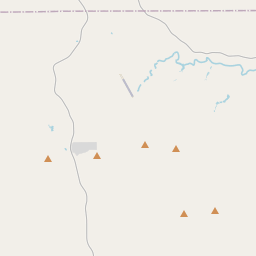Former Site of Dowdy School
Historical marker location:






After the Wolters and Nixon School Districts merged in 1916, school trustees acquired 2 acres here from William Dowdy and erected the Wolters-Nixon School building. A gymnasium and classrooms were added in the early 1930s after an oil boom boosted the local economy. In 1932 the school was renamed Dowdy and offered high school classes for the first time. Despite a steady decline in student enrollment after 1938, the high school continued and students excelled in various team sports. Dowdy School was annexed to the Seguin School System in 1951. (1994)
As one of the most visible programs of the Texas Historical Commission (THC), historical markers commemorate diverse topics in Texas history, including: the history and architecture of houses, commercial and public buildings, religious congregations, and military sites; events that changed the course of local and state history; and individuals who have made lasting contributions to the state, community organizations, and businesses.
Texas is known for its barbecue, and one of the most famous barbecue restaurants in the state is Kreuz Market in Lockhart. The restaurant has been in operation since 1900 and is still family-owned.
The area came under Spanish rule in the 18th century when Spanish explorers and missionaries arrived. In 1756, the Spanish established the Mission Nuestra Señora de Guadalupe de los Nacogdoches near present-day Seguin, marking the beginning of European settlement in the area. The mission was intended to convert and provide shelter for Native Americans, but it was eventually abandoned due to conflicts with local tribes.
During the turbulent years of the 19th century, Guadalupe County witnessed significant changes. In 1836, the Battle of the Alamo and the Texas Revolution prompted a wave of Anglo-American settlers to move into the area. The county was officially established in 1846, and soon after, it became an important center for agriculture, particularly cotton production.
The county's growth continued during the late 19th and early 20th centuries. The arrival of the railroad in the 1870s brought increased economic opportunities and facilitated trade with other regions of the state. By the early 20th century, Guadalupe County had a thriving economy with industries such as agriculture, oil and gas, and manufacturing.
Today, Guadalupe County retains its agricultural heritage while also being home to a diverse mix of industries and communities. It offers a unique blend of rural charm, natural beauty, and a growing suburban area. With its rich historical background and vibrant present, Guadalupe County remains an essential part of the Lone Star State.
Guadalupe County Timeline
This timeline provides a concise overview of the key events in the history of Guadalupe County, Texas.
- 1838: Guadalupe County is established as a county in the Republic of Texas.
- 1846: Guadalupe County becomes a part of the state of Texas after Texas is annexed by the United States.
- 1848: The county seat of Guadalupe County is established in Seguin.
- 1861-1865: Guadalupe County is greatly affected by the American Civil War.
- 1876: The courthouse in Seguin is destroyed by fire but is rebuilt the following year.
- Late 1800s: The county experiences significant growth with the introduction of the railroad and the development of agriculture and industry.
- Early 1900s: Guadalupe County experiences further growth with the discovery of oil and gas in the area.
- 1930s-1940s: Guadalupe County suffers from the effects of the Great Depression and World War II.
- 1960s-1970s: The county experiences growth and development with the construction of Interstate 10 and the expansion of the petrochemical industry.
- 2000s: Guadalupe County continues to grow and attract new residents and businesses.